All 5 entries tagged Implementation
Real world examples of the implementation of learning designs, spaces and technologies, reported on and reflectively examined.
View all 38 entries tagged Implementation on Warwick Blogs | View entries tagged Implementation at Technorati | There are no images tagged Implementation on this blog
July 27, 2009
How to film your brilliant idea – workshop slides and example video clips
Here are the slides and example video clips used in the workshop that I teach to introduce people to creating short online films. The workshop uses iMovie 09, making all of the techniques illustrated in the clips achievable even by those without previous experience (cut aways, picture in picture, sound effects, titles, transitions). The workshop is principally for people wanting to create films that present an argument or an idea, attempting to convince the audience. Note that the participants first create their introduction, then their conclusion, and finally they add the main body of the movie, the narrative. They should be able to create the intro and conclusion within 3 hours, and may even create a complete movie.

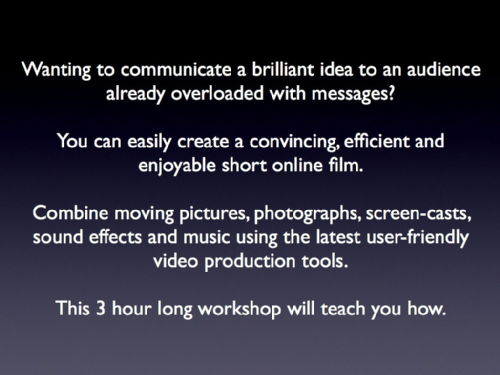
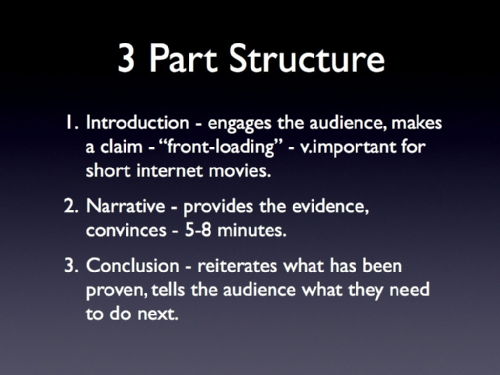
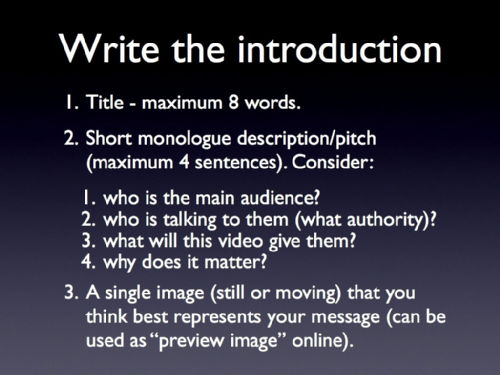
Example introductions

By Michael John Kooy, Philosophy and Literature

By Stephanie Redding & James Mears, Careers
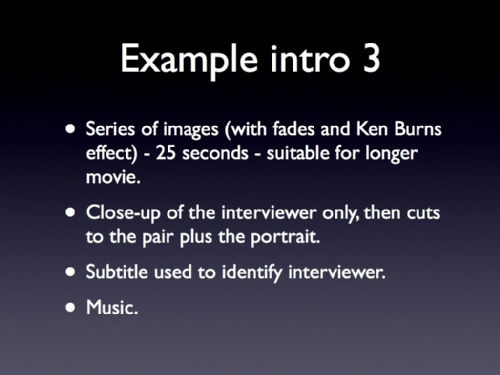
By the Digital Press Office
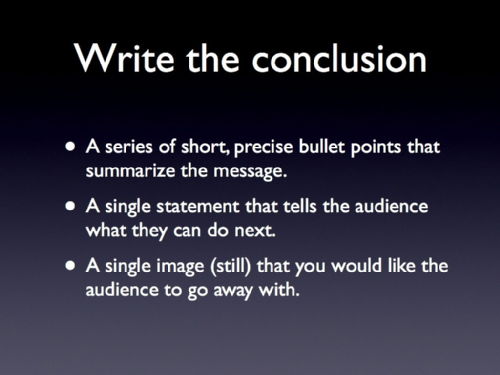
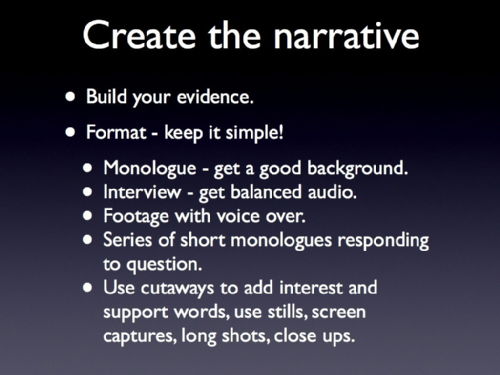
Example narratives
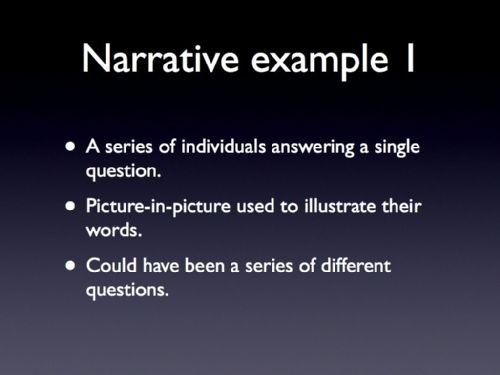
By Douglas Linnsen & Catherine Allen, Arts E-Squad
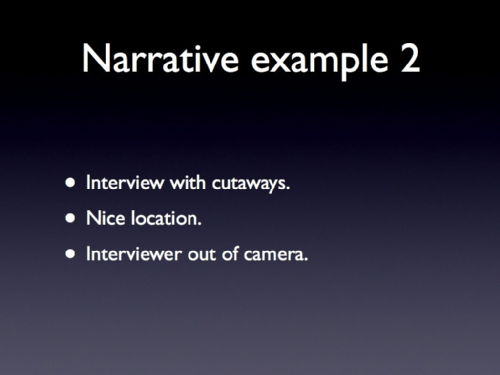
By Michael John Kooy, Philosophy and Literature
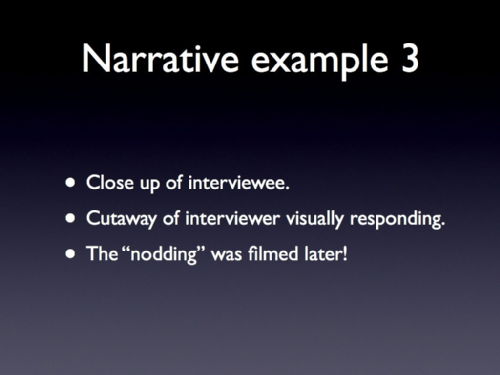
By Stephanie Redding & James Mears, Careers

By the Digital Press Office
First experiment with un–obtrusive recording of student personal state descriptors
Follow-up to Personal state descriptors for case studies from Inspires Learning - Robert O'Toole
The method previously described has now been tested in a 3 hour session. The aim, to reiterate, is to track changes in the emotional, physical, intellectual and social states of the students (self-reported) at key points - for example, when moving from one spatial configuration to another.
My first experiment aimed simply to test whether the approach is sufficiently un-obtrusive. I haven't really considered the effectiveness of the set of decriptors that I am working with.
At three key points during the session, as we moved between different phases of the session and different seating arrangements, each student selected from a list of words plotted on an A4 sheet and organised into a quick-to-scan concept map. This worked well. The students were happy to complete the forms, despite being engaged in an interesting and challenging activity. I have now compiled the results. They are quite uniform, as the session was not very diverse. However, there are some interesting patterns to spot. The students found the location, the Teaching Grid, to be comfortable throughout.
|
|
Sample point 1 |
Sample point 2 |
Sample point 3 |
|
|
|||
|
Social |
Communicative: 3 |
Communicative: 4 Sharing: 3 |
Receptive: 3 |
|
|
|||
|
Physical |
Comfortable: 4 |
Comfortable: 4 |
Comfortable: 3 |
|
|
|||
|
Intellectual |
Challenged: 4 |
Challenged: 4 |
Inspired: 5 |
|
|
|||
|
Emotional |
Calm: 4 |
Happy: 5 |
Happy: 3 |
July 10, 2009
Grad School session: Risk–free online networking, publishing and communications
I've been asked to teach a session about online identity and security for the Warwick Graduate School skills programme. Here's the description that I have written for their programme:
Risk-free online networking, publishing and communications
How safe is your identity? What risks do you take when interacting with web sites? Social networking, blogging, podcasting, buying online? For many people, ordinary everyday activities. Add to that the increasing pressure upon academics to present themselves and their work through the web. For the media, this is inevitably a crisis:
Millions of people are leaving themselves open to identity theft when using social networking websites, according to the consumer group Which? Members of sites such as Facebook can join large networks which reveal personal information to thousands of others on the network. Personal data privacy ‘at risk’, BBC News website, 21st February 2008
In this session we will examine the truth behind the online identity and security panic. We will consider the trade-off between being open and staying secure. Common risks will be evaluated. Simple safety measures will be recommended.
Learn to enjoy using the web to develop your academic and professional identity and networks.
 Robert O'Toole
Robert O'Toole

 Please wait - comments are loading
Please wait - comments are loading





